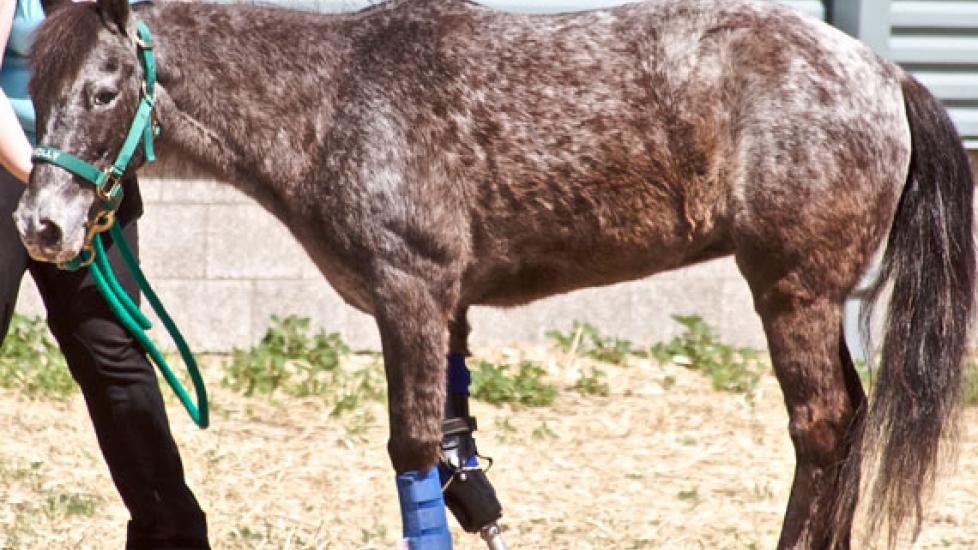The Will to Walk – Prosthetic Limbs for Horses
In recent news, there have been several heart-warming stories about dogs thriving with prosthetic limbs. No matter if their special needs come from congenital abnormalities or injuries, these pooches seemingly have no worries bouncing around partly on prostheses. But what about horses? Is there still truth to the maxim “no hoof, no horse?” Perhaps not.
Several maladies outside of injury can cause a horse’s foot to become useless. Simple neglect of proper hoof trimming in a situation where the horse cannot wear the hoof down on his own (e.g., if the animal is restrained to a stall or muddy paddock) can result in grossly overgrown hooves that, if infected, can cause permanent disfigurement and pain. If infection spreads to the bone inside the hoof, it becomes incredibly difficult to treat with antibiotics.
One of the primary challenges of equine prosthetics is the sheer weight of the animal for which the prosthetic must hold. The average adult horse weighs 1,000 pounds. Due to weight distribution during movement, this would require a prosthetic to be able to bear up to 4,000 pounds. In addition to the weight load, precautions against chafing and pressure sores must be taken. Understandably, an equine prosthetic is made to order, usually by a company that makes human prosthetics.
Equine prosthetics by necessity have to be tough, so they are usually made of either laminate or carbon graphite with a titanium post. They also include shock absorbers to decrease stress and pressure on the stump to which it is attached. The point of attachment to the leg can be a tricky piece to fit to ensure proper alignment with the leg and a secure fit, all while preventing the formation of sores. Some crowd-funded research is being conducted on finding out if it is possible to attach a prosthesis directly into a horse’s bone instead of outside leaning on the stump.
Of course, once a horse gets a prosthesis, there’s still upkeep. Although the horse should be able to lie down and get back up as well as ambulate faster than a walk if need be, attachment straps and foam liners need to be periodically replaced. Sometimes a boot or sock is placed at the end of a prosthesis, which would also need regular replacement. The owner should also regularly monitor the prosthesis for signs of breakdown or improper wear on the stump.
Given the issues with size, one might think that prostheses have only been successful in miniature horses and ponies. However, this isn’t true.
Sure, a plucky black miniature horse named Midnite hit the news a few years ago with his successful prosthetic leg, but then there’s also Spirit, a gray horse of average size who, thanks to a rescue group, made a comeback with a prosthetic front leg after being abused.
Not to have one species hog the limelight, bovines, too, have been fitted with prosthetics every now and then. Just last year a calf named Hero, whose mother rejected him and who then lost his hind legs to frostbite, received not one but two prosthetics. Also, the anatomy of the mountain goat leg has inspired a manufacturer to design a prosthetic for human mountain climbers. Pretty cool, right?

Dr. Anna O’Brien
Image: Molly the Pony, by Jean / Flickr Creative Commons
